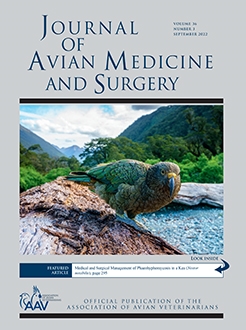The purpose of this study was to measure the effects of detomidine and medetomidine alone or in combination with ketamine on Schirmer tear test I (STT I) results and intraocular pressures (IOPs) in the common buzzard (Buteo buteo). Fourteen ophthalmologically healthy common buzzards were randomly assigned to 1 of 2 α-2 adrenoreceptor agonist groups: a detomidine group (group 1) and a medetomidine group (group 2). The detomidine group had 2 subgroups, detomidine alone or in combination with ketamine. Similarly, the medetomidine group had 2 subgroups, medetomidine alone or in combination with ketamine. Five minutes after α-2 adrenoreceptor agonist administration, the first measurements of STT I and IOP were collected. Ketamine was injected intramuscularly immediately after the first measurements were recorded. Schirmer tear test I and IOP measurements were repeated 5 minutes after ketamine administration. Measurements were obtained for 3 subgroups per agonist grouping: baseline 1, detomidine alone and detomidine with ketamine for group 1, and baseline 2, medetomidine alone and medetomidine with ketamine for group 2. Both IOP and STT I decreased significantly after sedation, anesthesia, or both. Intraocular pressure was significantly lower in the detomidine-ketamine group compared with the detomidine alone group. The IOP and STT I significantly decreased in both the medetomidine alone and medetomidine-ketamine groups when compared with those for all 14 unanesthetized animals before administering the α-2 adrenoreceptor agonist and ketamine. When α-2 adrenoreceptor agonists were considered as a single group (groups 1 and 2 combined), IOP also showed a significant decrease in the α-2 adrenoreceptor agonist–ketamine groups compared with the α-2 adrenoreceptor agonists alone, but STT I did not. According to the results obtained from these common buzzards, no statistical differences were found between the detomidine and medetomidine (alone) groups or detomidine-ketamine and medetomidine-ketamine groups in terms of STT I and IOP.
How to translate text using browser tools
25 November 2022
Measuring the Effects of Detomidine and Medetomidine Alone and in Combination with Ketamine on Tear Production and Intraocular Pressure in Common Buzzards (Buteo buteo)
Zeynep Bozkan,
Rahime Yaygingul,
Osman Bulut,
Ali Belge
ACCESS THE FULL ARTICLE
Anesthesia
Avian
Buteo buteo
Common Buzzard
intraocular pressure
raptor
Schirmer tear test





